Attention new birders: I have news for you. Winter is not the off-season.
Sure, it’s absolutely frigid outside, a meager 20 species is a good day, and by the time January rolls around you never want to see another raft of ducks for as long as you live. (Okay, at least not until next winter.)
But despite the obvious challenges, winter birding is incredibly rewarding. Birds are easy to find in the leafless trees, trails and parks are quiet, and your checklists abound with many species that can only be found in the United States in winter. Plus, thanks to shortened daylight hours you don’t have to wake up at 4:00 a.m. to be out before the sunrise.
Check out our picks for 10 great birds you’ll only find in winter, and share your favorite winter birds in the comments below. (And if you can’t get outside, watch the Cornell Lab of Ornithology’s Ontario feeder cam to see some winter birds up close!)
Top 10 List
-
Red & White-winged Crossbills
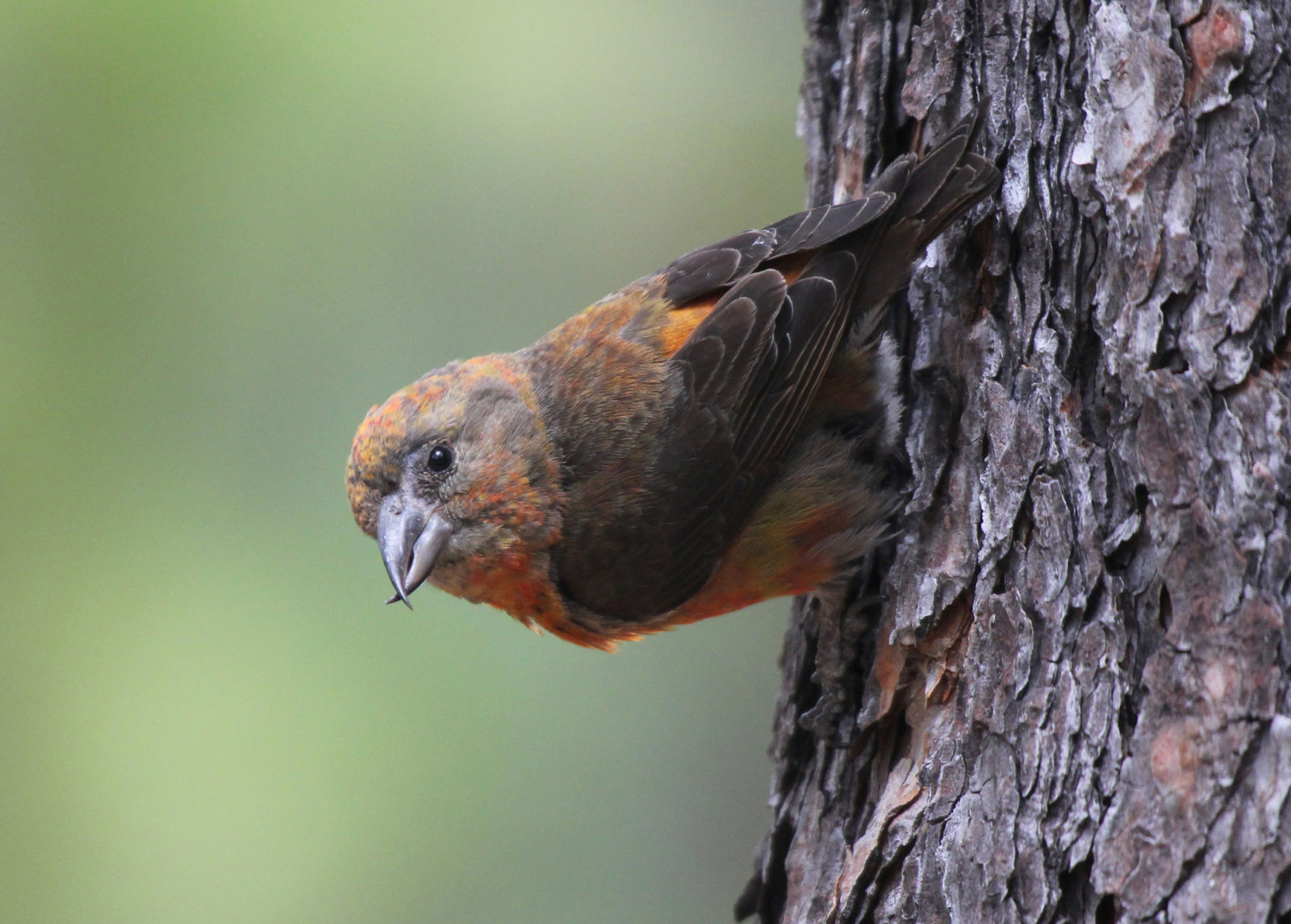
Photo © Red Crossbills and White-Winged Crossbills is one challenge — the second is getting close enough to actually to see their twisted bills, which they use to prize seeds out of pine cones. Males of both species are a brilliant scarlet, while the females are olive green. You can tell them apart by the white dappling on the wings (called wing bars), on the White-Winged Crossbill. Finding Red Crossbills and White-Winged Crossbills is one challenge — the second is getting close enough to actually to see their twisted bills, which they use to prize seeds out of pine cones. Males of both species are a brilliant scarlet, while the females are olive green. You can tell them apart by the white dappling on the wings (called wing bars), on the White-Winged Crossbill.
Both species are found year-round throughout the Rockies, and throughout the mid to northern U.S. in the winter. Listen closely if you happen upon a flock of Red Crossbills — the species has 10 distinct call-types, and different sub-populations specialize on different types of conifers.
-
Northern Goshawk
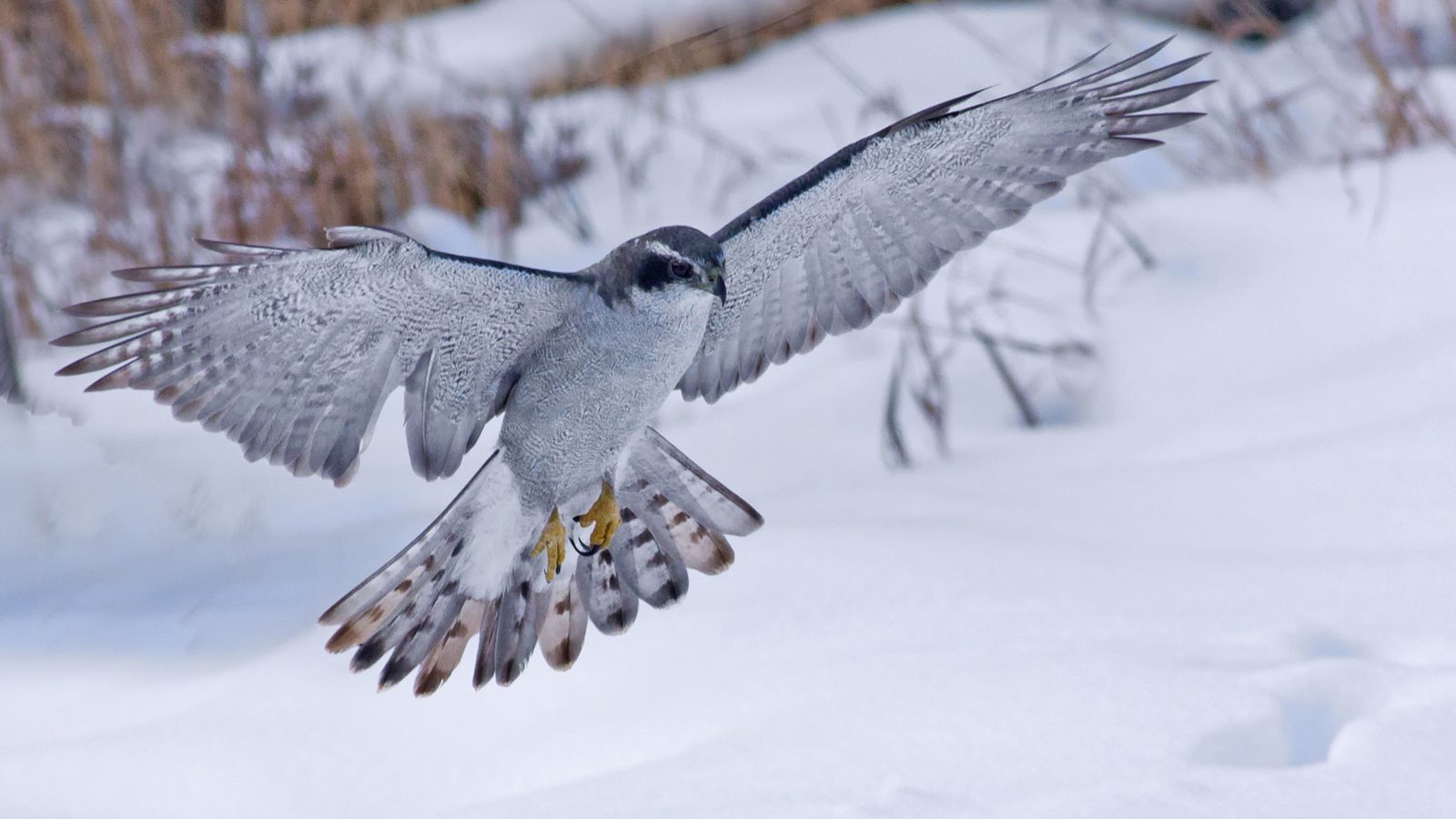
Northern Goshawk are used as an indicator species since they are at the top of the food chain. Photo © Bruce Taubert Few Northern American raptor species are as likely to initiate a tick-the-bird-or-die-trying twitch like the Northern Goshawk. The largest North American accipiter, these powerful, elusive hawks hunt rabbits, hares, squirrels, and other large birds in dense forests, zipping through the trees at high speeds. They’re found year-round throughout the Rockies, and throughout the mid to northern U.S. in the winter. Adults are distinctive, with heavily barred chests, steel grey back and wings, and deep red eyes. But be careful — juvenile goshawks look similar to Coopers and Sharp-Shinned hawks.
-
Snow Bunting

Photo © Kelly Colgan Azar / Flickr The subtly beautiful, sparrow-sized Snow Bunting breeds on the high Arctic tundra, where they nest in rock crevices lined with feathers, fur, grass, and moss. Their winter range extends to the northern half of the U.S., where they’re often seen foraging in flocks in snowy winter fields.
Male Snow Buntings have to put in a bit of work to achieve their striking black-and-white breeding plumage. After their late summer molt, the plumage on their back and wings is brownish-black. Males wear off the brown-colored feather tips by rubbing themselves against the snow, resulting in pure-black coloration by the time the breeding seasons starts.
-
Lapland Longspur

Photo © Alaska Region US Fish & Wildlife / Flickr Like the Snow Bunting, Lapland Longspurs breed high in the Arctic and then winter in large flocks, some as many as 4 million strong, in the open fields of the northern U.S. Males are distinctive, with jet-black masks, reddish necks, and a yellow eye stripe. Females are much more tricky to identify, with brown, streaky, sparrow-like plumage. The “longspur” in this species’ name comes from an elongated claw on the hind toe.
-
Ross’s & Snow Geese
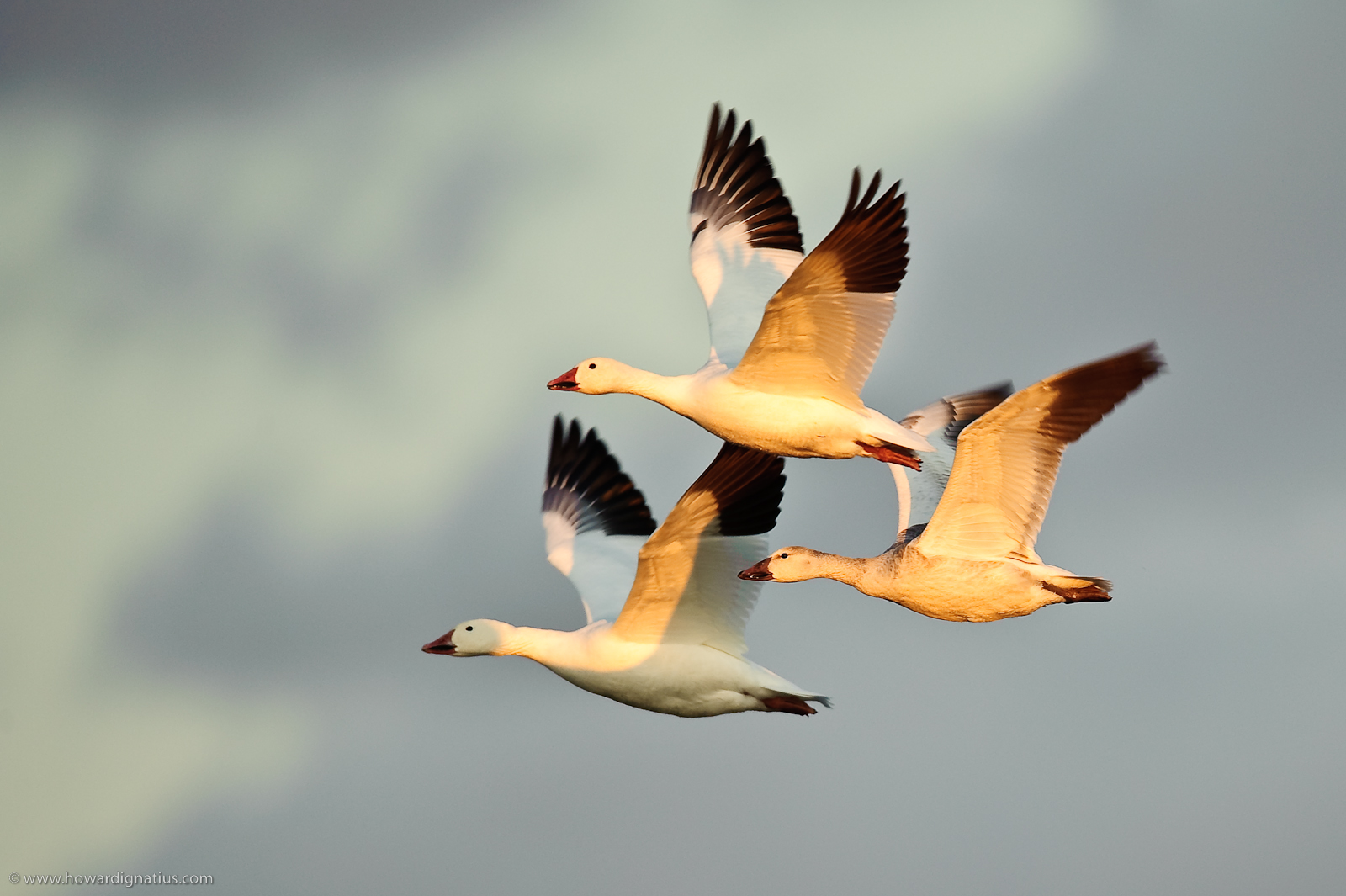
Photo © Howard Ignatius / Flickr Stop and take a closer look the next time you pass a lake brimming with Canada Geese — hidden among them might be a few Ross’s Geese or Snow Geese. Both species are snowy white, with black wing tips and pink beaks. They breed on the Arctic coasts and winter in just a few spots in the U.S., where you can find them in flocks together anywhere other winter waterfowl and geese congregate, including open lakes and agricultural fields.
The species are difficult to tell apart unless they’re sitting side by side: The Ross’s Goose is smaller and more delicate, with a shorter neck. Meanwhile, the Snow Goose has a larger, chunkier bill with a dark line, or “grin patch” near the gape.
-
Bohemian Waxwing
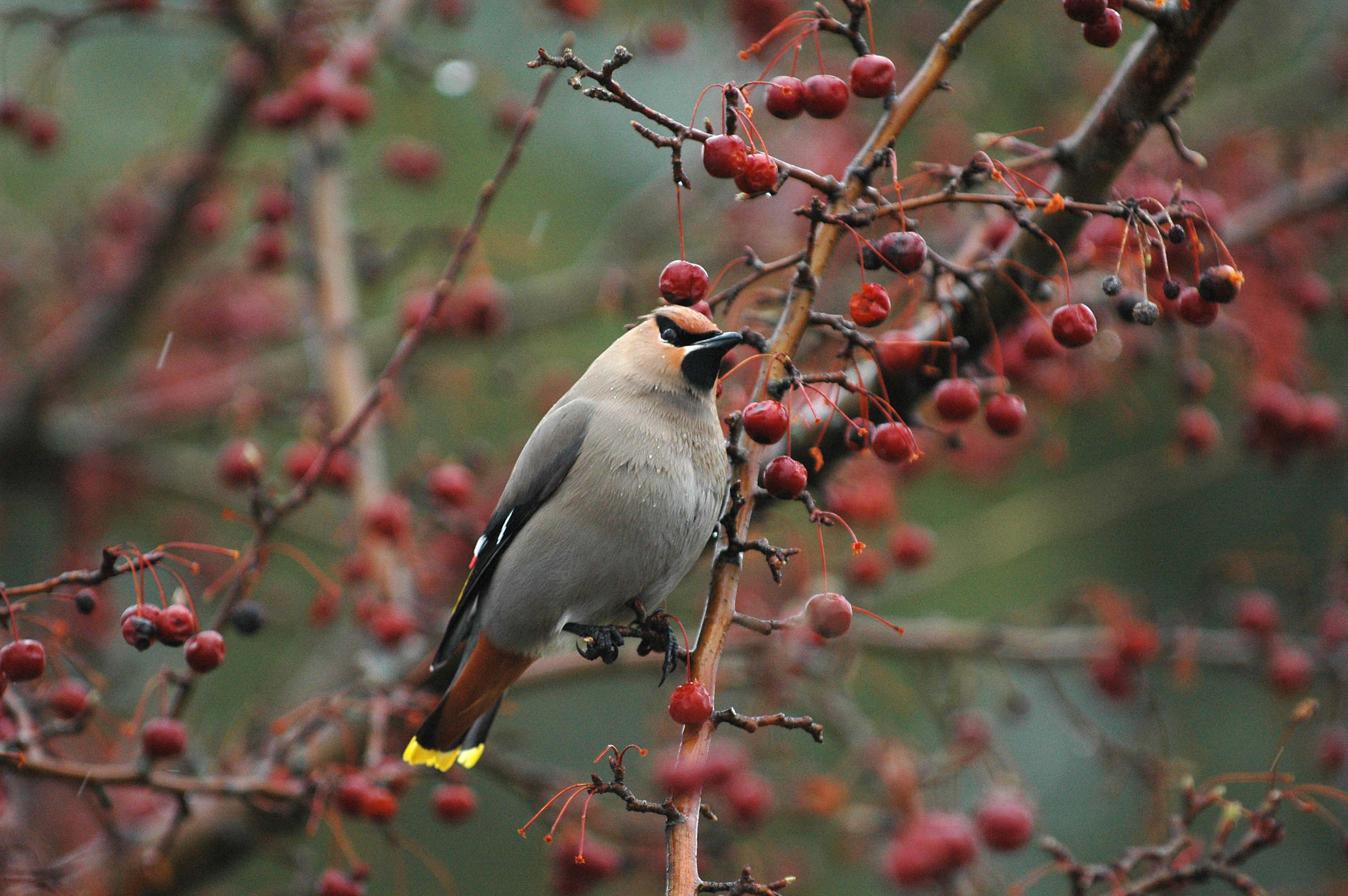
Photo © Bohemian Waxwing breeds in northwestern Canada, occasionally erupts down into the northern U.S., mostly in the west. Named after gypsies, Bohemian Waxwings roam large distances in winter to search for berries, other fruit, and insects. Be careful not to confuse them with the similar-looking Cedar Waxwing: Bohemians have red and yellow wingtips, a dark black chin, rust-colored feathers under the tail, and a more greyish coloration. Just one of three waxwing species in the world, the Bohemian Waxwing breeds in northwestern Canada, occasionally erupts down into the northern U.S., mostly in the west. Named after gypsies, Bohemian Waxwings roam large distances in winter to search for berries, other fruit, and insects. Be careful not to confuse them with the similar-looking Cedar Waxwing: Bohemians have red and yellow wingtips, a dark black chin, rust-colored feathers under the tail, and a more greyish coloration.
-
Evening Grosbeak
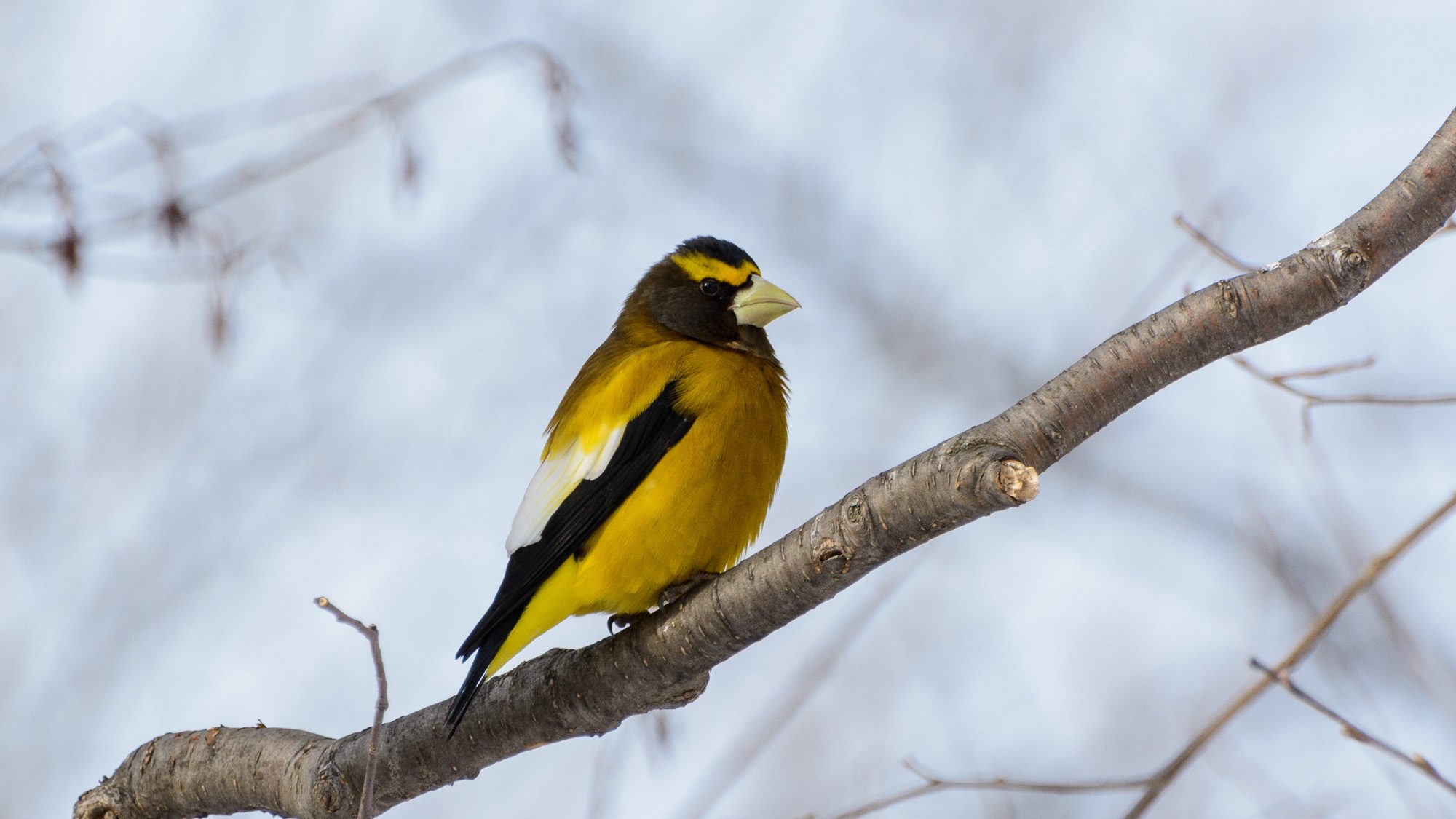
An evening grosbeak. © Claudine Lamothe / Flickr Garish, unmistakable, and awesome — meet the Evening Grosbeak. Like the crossbills, these finches of the northern conifer forests often “irrupt” father south into the continental U.S. in winter in search of food. Flocks are common at feeders, where you can get an up-close look at their gaudy coloration: Males are an eye-popping yellow, with black swings, and a bold eyebrow. Females are more subdued, but have a fantastic, green-colored beak.
-
Snowy Owl
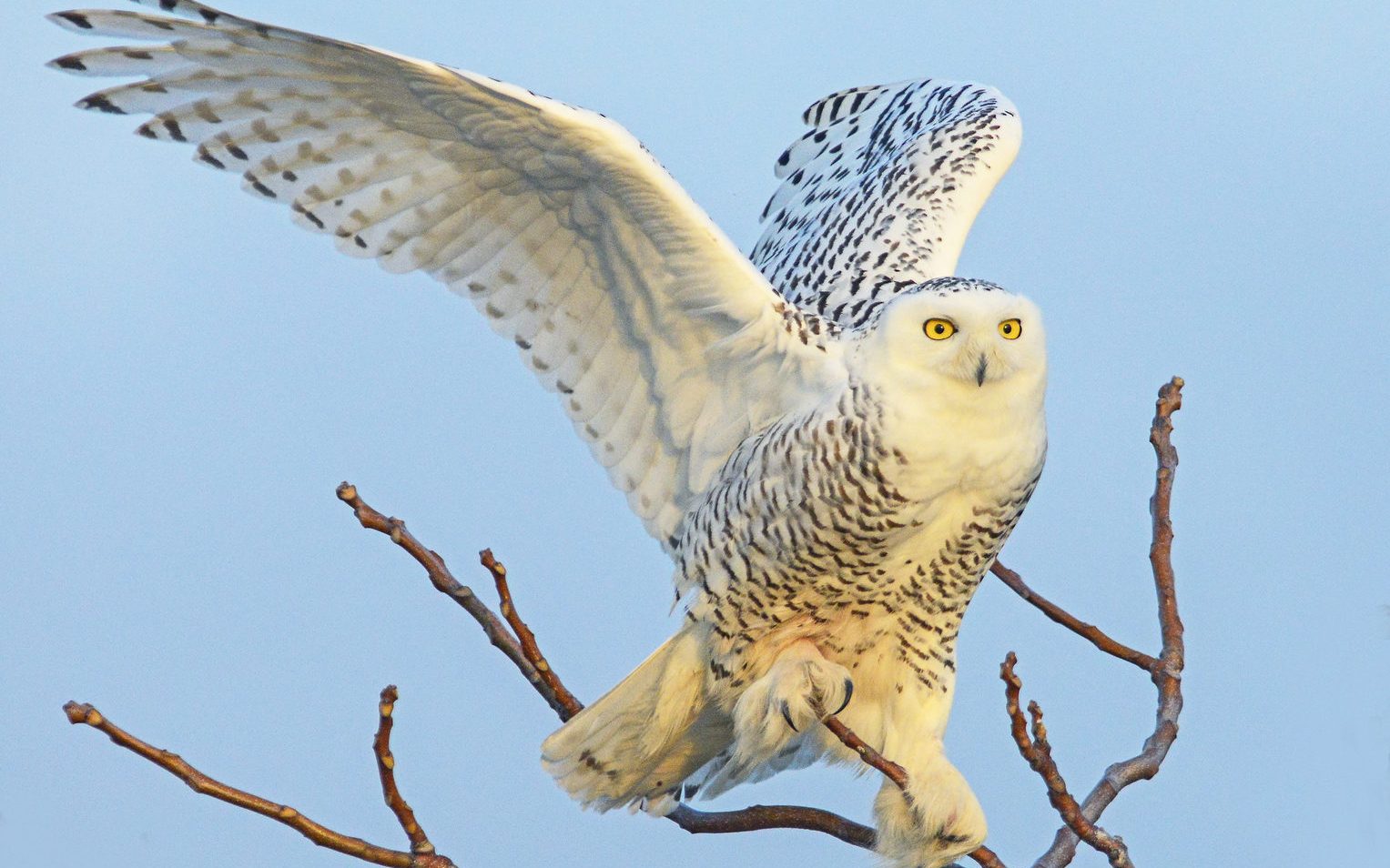
Photo © Don Bindler Serious birders still swoon when they think back on the winter of 2013-2014, when thousands of Snowy Owls irrupted into the lower 48, turning up as far south as Florida and the Bahamas. Similar — if not quite as epic — owl irruptions occur roughly every 3 to 5 years. But even in the off years, a few Snowy Owls still push into the northern U.S. Keep an eye on your local eBird listings for sightings near you, and read birder Tim Boucher’s advice for taking advantage of these winter invasions.
-
Rosy-Finches
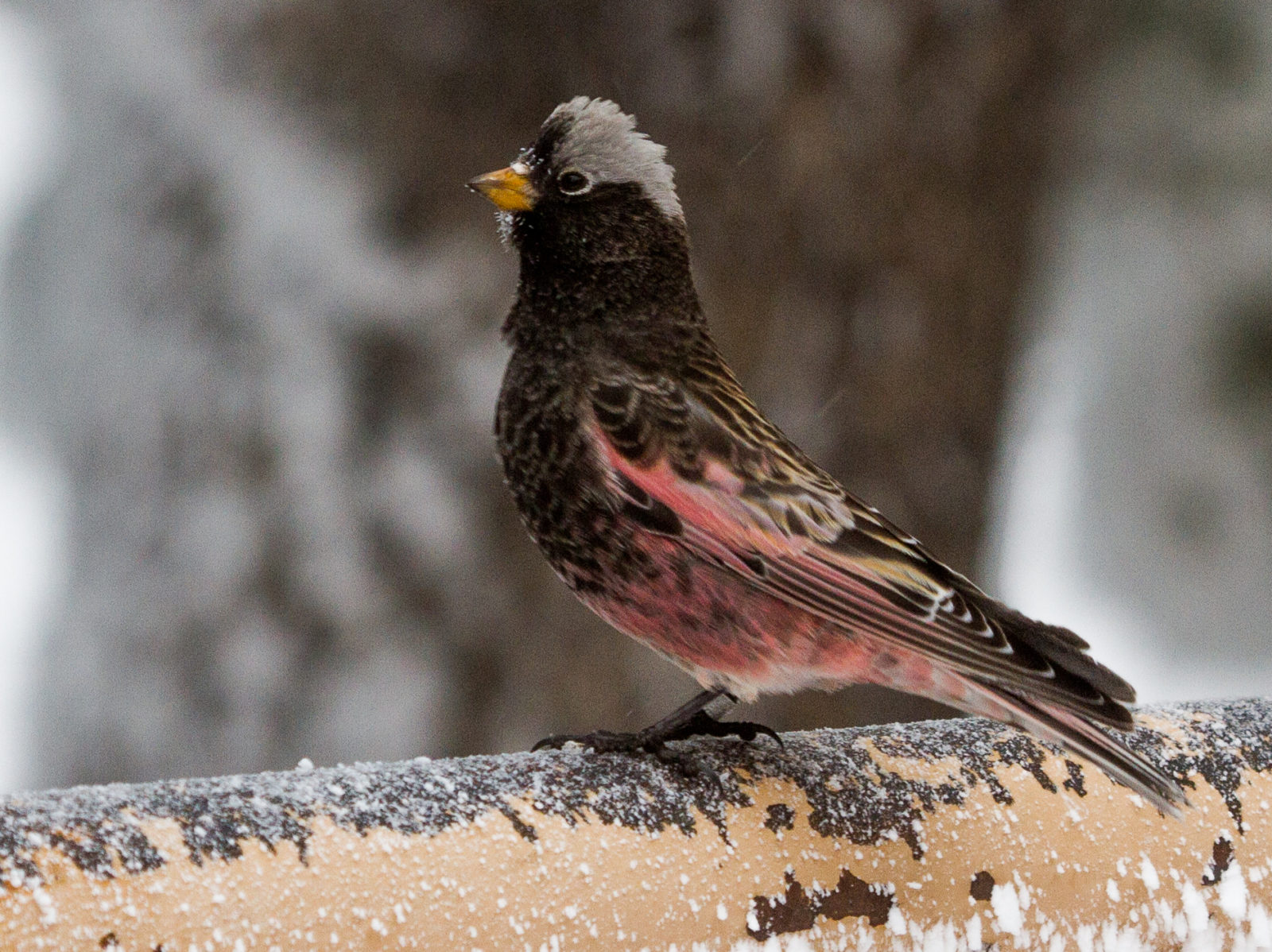
Photo © Steve Valasek / Flickr The three rosy-finch species — Brown-capped, Grey-crowned and Black — are Rocky Mountain winter specialties. The Black and Gray-crowned are found throughout the west, while the Brown-capped is only found in Colorado and northern New Mexico. All three species are poorly studied by scientists because their breeding ranges are small and incredibly remote.
Check eBird for common locations, as many flocks return to the same well-stocked winter feeders each year, and review some photos before you go. (The three species aren’t difficult to tell apart when they’re side-by-side, except when a flock of 50 of them is milling frantically around a feeder.)
-
Hoary & Common Redpolls
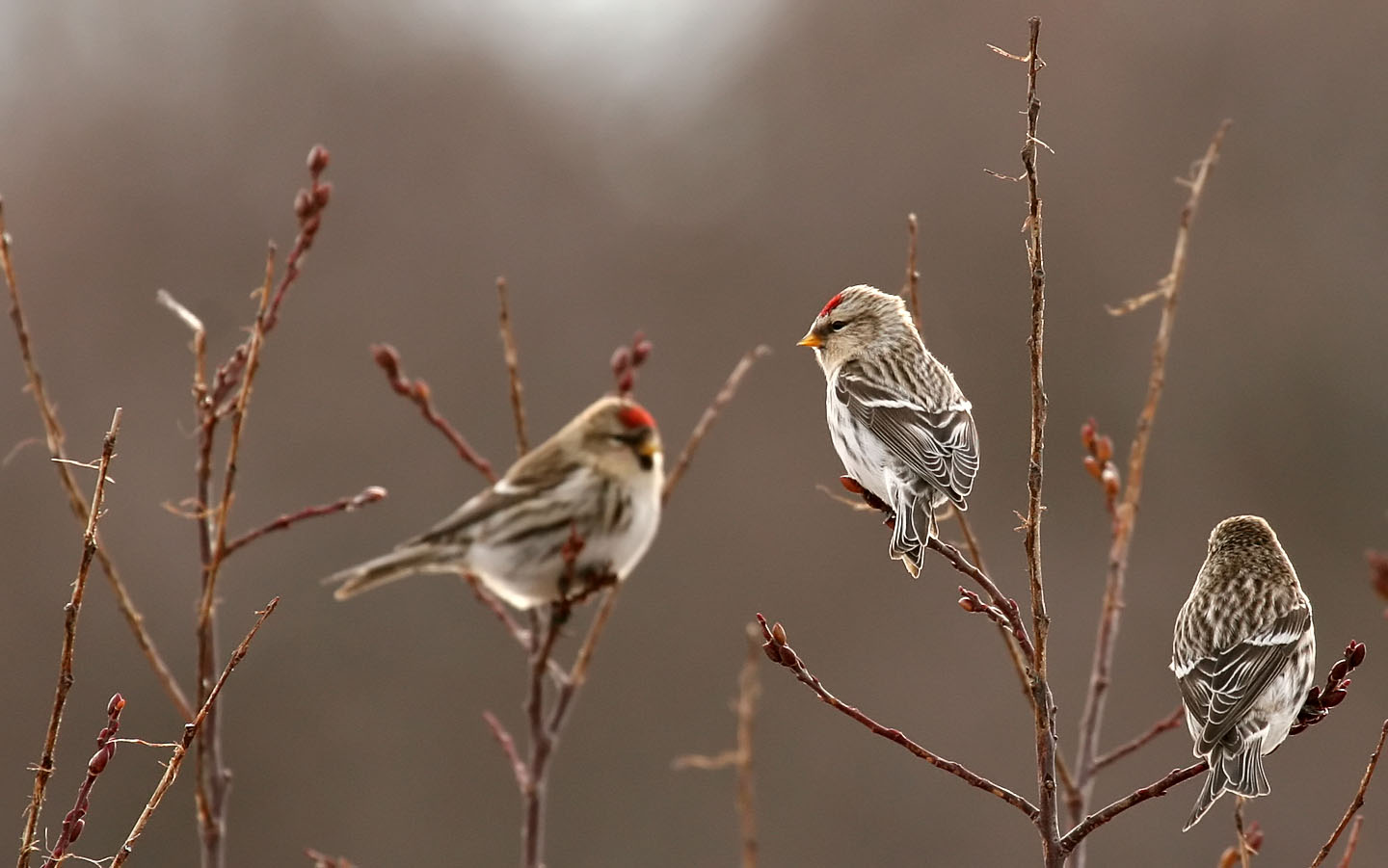
Photo © nebirdsplus / Flickr (now removed, Creative Commons when added) Another irruptive bird and feeder favorite, Hoary and Common Redpolls are well adapted to life in frigid arctic climates. They’re found year-round in northern Canada, where Common Redpolls sometimes burrow into the snow to stay warm. Hoary Redpolls have feathers on a greater extent of their bodies than other birds, and sometimes if temperatures get too warm they’ll pluck out their own feathers to help regulate their temperature.
Hoary Redpolls are the rarer of the two — look for pale birds with less streaking hiding in flocks of Common Redpolls.
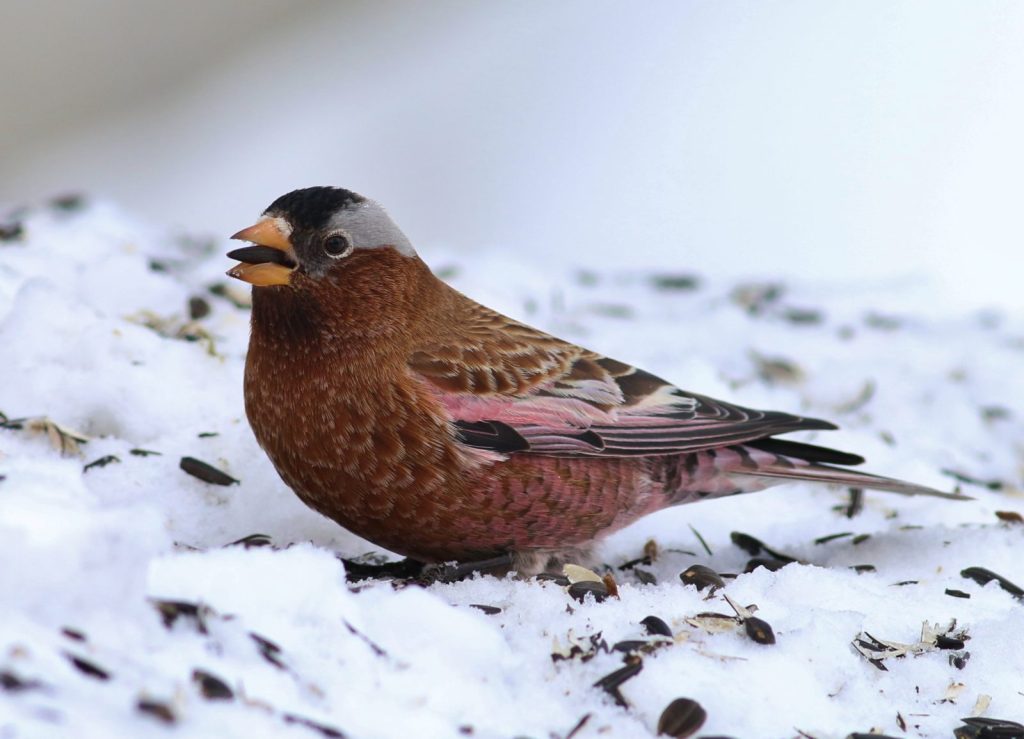



Join the Discussion
1 comment